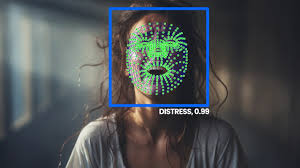
Archives - Page 2
-

CertiChain – A Blockchain-Based Framework for Digital Certificate Verification
Vol. 2 No. 05 (2025)Abstract
This project aims to explore the application of blockchain technology in enhancing the verification and validation processes of digital certificates. As the digital landscape continues to evolve, the need for secure and reliable methods of validating credentials becomes paramount. Traditional methods of certificate verification often face challenges related to security and trust.
The project focuses on leveraging the decentralized and tamper-resistant nature of blockchain to establish a robust framework for digital certificate verification. Through the implementation of smart contracts and cryptographic principles, the proposed system ensures the integrity and authenticity of digital certificates. The blockchain network acts as a distributed ledger, recording and validating certificate transactions across multiple nodes.
Key objectives of the project include designing a user-friendly interface for certificate submission and verification, implementing secure cryptographic techniques for digital signatures, and integrating smart contracts to automate the validation process. The project also explores the potential scalability and efficiency benefits of blockchain technology in handling large-scale certificate verification scenarios.
Through this endeavor, this project aims to contribute to the advancement of secure credential verification systems, addressing the challenges associated with traditional methods. The project aligns with the broader goals of enhancing digital trust and security, offering a practical and innovative solution for validating digital certificates using cutting-edge blockchain technology.
Index Terms
Blockchain technology, Digital certificates, Verification processes, Validation processes, Decentralization, Tamper-resistance, Smart contracts, Cryptographic principles, Distributed ledger, User-friendly interface, Cryptographic techniques, Digital signatures, Scalability, Efficiency, Credential verification systems, Digital trust, Security, Innovation.
-

CCTV-Based Safety Gear Detection System for Enhancing Workplace Safety in Industrial Environments
Vol. 1 No. 04 (2024)The implementation of CCTV surveillance for safety gear detection in industrial environments is becoming increasingly imperative to enhance workplace safety standards. This project aims to develop a robust system utilizing CCTV cameras to detect the presence or absence of essential safety gear worn by employees, such as helmets, goggles, and gloves. Through image processing techniques and machine learning algorithms, the system will analyze real-time video feeds to identify instances of non-compliance with safety regulations. The project will involve the design and development of algorithms for object detection and classification, as well as the integration of these algorithms into a user-friendly interface for industrial monitoring purposes. The anticipated outcome is a reliable CCTV surveillance system capable of proactively identifying safety gear violations, thereby mitigating potential hazards and promoting a safer work environment in industrial settings.
Index terms
CCTV surveillance, Safety gear detection, Industrial environments, Workplace safety standards, Image processing techniques, Machine learning algorithms, Object detection, Classification algorithms, Real-time video feeds, Non-compliance detection, Safety regulations, User-friendly interface, Industrial monitoring, Safety gear violations, Hazard mitigation, Proactive identification, Work environment safety, Robust system design.
-

A Hybrid DeepFM Approach to Student Retention
Vol. 2 No. 08 (2025)Abstract
This project revolves around the development and implementation of a predictive model for anticipating student dropout utilizing the innovative DeepFM algorithm. DeepFM, a fusion of deep learning and factorization machines, proves to be a potent tool for unraveling complex patterns within diverse datasets. The project aims to leverage the algorithm's capability to analyze and interpret multifaceted features such as academic performance, attendance, and socio-economic factors. Through the integration of deep neural networks and collaborative filtering, DeepFM demonstrates proficiency in discerning intricate relationships, contributing to accurate student dropout predictions. The project's primary objectives include the exploration of DeepFM's suitability for handling sparse and high-dimensional student data, as well as its potential to offer proactive insights for educational institutions to address and mitigate dropout risks. The anticipated outcome is a robust predictive model that aids educational institutions in identifying potential dropout candidates, facilitating timely interventions and support mechanisms to enhance student retention.
Index Terms
Predictive modeling, Student dropout prediction, DeepFM algorithm, Deep learning, Factorization machines, Multifaceted features, Academic performance, Attendance, Socio-economic factors, Deep neural networks, Collaborative filtering, Sparse data handling, High-dimensional data, Dropout risk mitigation, educational institutions, Timely interventions, Support mechanisms, Student retention, Data analysis, Machine learning applications.
-

Intelligent Fake Profile Detection for Instagram Using Machine Learning
Vol. 2 No. 02 (2025)Abstract:
The project entails the development of a Python-based system for detecting fake Instagram profiles using machine learning models and image processing techniques. The script employs libraries such as TensorFlow, Keras, Scikit-Learn, Pandas, Matplotlib, Seaborn, and OpenCV, facilitating extensive data handling, statistical analysis, visualization, and machine learning model training. The process begins by importing relevant libraries and datasets, followed by preliminary data exploration and visualization to understand the features and distributions within the data. The training dataset is preprocessed and scaled before being fed into a neural network model structured with multiple dense layers and dropout for regularization, optimized using Adam optimizer for categorical cross-entropy loss. The model's performance is evaluated using metrics like accuracy and loss progression during training/validation phases. Further, the script incorporates image processing techniques to analyze profile pictures using Haar Cascade classifiers for face detection, which contributes to determining the authenticity of profiles. Additionally, OCR (Optical Character Recognition) via Easy OCR is applied to extract textual data from images, providing a comprehensive understanding of profile components such as username, posts, followers, and other descriptive elements. Overall, this project integrates multiple computational techniques to create an automated tool that aids in identifying and analyzing fake profiles on Instagram, showcasing the practical application of AI and machine learning in social media management.
Keywords- Instagram, Fake Profile Detection, Python, Machine Learning, TensorFlow, Keras, Neural Networks, Data Visualization, Image Processing, OpenCV, Haar Cascade, OCR, EasyOCR, Pandas, Matplotlib, Seaborn, Scikit-Learn, Statistical Analysis, Data Preprocessing, Model Evaluation, Text Extraction, Profile Analysis.
-

LSTM-Based Telugu Text Generation: Enhancing NLP for Content Creation and Language Preservation
Vol. 2 No. 04 (2025)Abstract
In this project, a Telugu text generator utilizing Long Short-Term Memory (LSTM) neural networks is developed to facilitate the automatic generation of coherent and contextually relevant Telugu text. The LSTM architecture, known for its effectiveness in handling sequential data, particularly in natural language processing tasks, serves as the foundation for this text generation system. The project aims to address the growing demand for computational tools capable of generating Telugu text, catering to various applications such as content creation, language learning, and cultural preservation. Through extensive training on a large dataset of Telugu text, the LSTM model learns the underlying patterns, semantics, and grammatical structures of the language, enabling it to generate text that closely resembles human-written Telugu content. The project's implementation involves data preprocessing, model training, and evaluation phases, with a focus on optimizing the LSTM network's performance in generating fluent and coherent Telugu text. The developed Telugu text generator provides a valuable resource for Telugu speakers, researchers, and developers interested in leveraging natural language processing techniques for Telugu language applications.
Index Terms
Telugu text generation, Long Short-Term Memory (LSTM) neural networks, Sequential data processing, Natural language processing (NLP), Computational linguistics, Text generation systems, Language modeling, Data preprocessing, Model training, Evaluation metrics, Grammatical structures, Semantic analysis, Cultural preservation, Language learning, Content creation, Telugu language applications, Fluency assessment, Coherence analysis, Text similarity, Resource optimization.
-

Human Activity Recognition
Vol. 1 No. 02 (2024)Abstract
The project on "Human Activity Recognition" explores the implementation of sensor fusion and machine learning techniques to accurately identify and classify human activities in various scenarios. This research aims to contribute to the development of intelligent systems capable of understanding and responding to human behavior. The project focuses on utilizing data from diverse sensors, including accelerometers and gyroscopes, to capture intricate patterns associated with activities such as walking, running, sitting, and other movements.
The proposed system employs advanced machine learning algorithms for the analysis of sensor data, aiming to enhance the accuracy and efficiency of human activity recognition. By integrating multiple sensor modalities, the project aims to create a robust model capable of handling diverse environmental conditions and activity contexts. The research explores the
application of deep learning methodologies to extract meaningful features and patterns from the sensor data, enabling real-time and context-aware activity recognition.
The significance of this project lies in its potential applications across various domains, including healthcare, sports analysis, and smart home environments. The developed system could find applications in health monitoring, personalized fitness tracking, and creating adaptive environments that respond to human behavior. The project not only contributes to the academic understanding of human activity recognition but also provides practical implications for the development of smart and responsive technologies in our daily lives.
-

Inclusive Sign Language to Text and Speech Conversion via Multi-Dataset Integration
Vol. 2 No. 07 (2025)Abstract
This project aims to develop an advanced system for Sign Language to Text and Speech Conversion by leveraging the power of multi-dataset integration. The primary objective is to enhance the accuracy and inclusivity of existing sign language conversion systems by incorporating diverse datasets.
The project involves the integration of various sign language datasets, encompassing different signing styles, regional variations, and expressions. This approach ensures a comprehensive understanding of sign language, enabling the system to accurately translate a wide range of signs and gestures into written text and spoken words.
By adopting a multi-dataset integration strategy, the system becomes more adaptable and inclusive, catering to the diverse needs of the signing community. The project addresses the limitations of traditional systems by providing a more robust and versatile solution for sign language users.
Through the implementation of this innovative approach, the project aims to contribute to the advancement of communication accessibility for individuals who rely on sign language as their primary mode of expression. The outcomes of this research have the potential to positively impact the field of assistive technology, fostering better communication and understanding for the deaf and hard-of-hearing community.
Index terms
Sign language, Text and speech conversion, multi-dataset integration, Accuracy enhancement, Inclusivity, Signing styles, regional variations, Expressions, Adaptability, Communication accessibility, Assistive technology, Deaf and hard-of-hearing community, Communication technology, Translation systems, Gesture recognition, Accessibility technology, Assistive devices, Language processing, Communication aids, Technological innovation.
-

A Hybrid Approach for Securing Digital Images Using Encryption and Steganography
Vol. 2 No. 01 (2025)Abstract
In today's digital age, ensuring the security and confidentiality of image data is paramount, particularly with the proliferation of online communication and storage platforms. This project proposes a hybrid approach for enhancing image security by synergistically integrating encryption and steganography techniques. The combination of these two methods aims to fortify the protection of digital images against unauthorized access and tampering. Encryption ensures the confidentiality of image content by converting it into an unintelligible form using robust cryptographic algorithms. Concurrently, steganography conceals the encrypted data within the image itself, embedding it imperceptibly into the pixels or metadata. The synergy of encryption and steganography not only safeguards the integrity of image data but also adds an additional layer of concealment, making it arduous for adversaries to detect and decipher sensitive information. Through this project, the efficacy of the hybrid approach will be evaluated through experimentation and analysis, with the ultimate goal of providing a comprehensive solution for image security in various applications and contexts.
-

Shaping the Ultra-Connected Future: The Road to 6G
Vol. 2 No. 10 (2025)Talk of “6G” is no longer an engineering thought experiment: it’s becoming a social and economic conversation. Vendors and standards bodies describe 6G as the platform that will move us from connected devices to connected intelligence and immersive experiences; governments are already funding research and patent drives; and citizens are thinking about towers, costs and health implications. This article surveys current views on 6G from industry white papers, policy bodies and early public reactions. It explains the potential benefits (new services, resilience, socio-economic uplift), explores the main cost levers (spectrum, densification, energy), and outlines social and governance challenges (acceptance, equity, environmental impact). The aim is to give a balanced, readable synthesis of what people think, what’s at stake, and how societies might prepare for the ultra-connected infrastructures 6G promises.
-

AI-Powered Mobile Application for Visually Impaired People
Vol. 1 No. 03 (2024)AbstractThis paper introduces an innovative mobile application powered by Artificial Intelligence (AI) technology, designed to significantly improve the daily lives of visually impaired individuals. The application incorporates advanced features such as object recognition, color recognition, offline functionality, currency notes recognition, barcode reading, text reader. These features collectively empower users by providing real-time information about their surroundings, facilitating safe and independent, enabling secure financial transactions, and enhancing overall accessibility. The integration of AI algorithms ensures accurate and efficient performance, making the application a valuable tool for improving the quality of life and promoting inclusivity for visually impaired individuals. This research contributes to the field of assistive technology by showcasing the potential of AI-driven solutions in addressing accessibility challenges and fostering independence among diverse user groups.
keywords
Artificial Intelligence, Mobile Application, Accessibility, Assistive Technology, Color Recognition, Offline Functionality, Object Recognition, Currency Notes Recognition , Barcode Reader , Text Reader , Scene Recognition, Voice Based Navigation
-

A Tamper-Proof Certificate Validation System Using Blockchain Technology
Vol. 2 No. 06 (2025)Abstract
This project aims to explore the application of blockchain technology in enhancing the verification and validation processes of digital certificates. As the digital landscape continues to evolve, the need for secure and reliable methods of validating credentials becomes paramount. Traditional methods of certificate verification often face challenges related to security and trust.
The project focuses on leveraging the decentralized and tamper-resistant nature of blockchain to establish a robust framework for digital certificate verification. Through the implementation of smart contracts and cryptographic principles, the proposed system ensures the integrity and authenticity of digital certificates. The blockchain network acts as a distributed ledger, recording and validating certificate transactions across multiple nodes.
Key objectives of the project include designing a user-friendly interface for certificate submission and verification, implementing secure cryptographic techniques for digital signatures, and integrating smart contracts to automate the validation process. The project also explores the potential scalability and efficiency benefits of blockchain technology in handling large-scale certificate verification scenarios.
Through this endeavor, this project aims to contribute to the advancement of secure credential verification systems, addressing the challenges associated with traditional methods. The project aligns with the broader goals of enhancing digital trust and security, offering a practical and innovative solution for validating digital certificates using cutting-edge blockchain technology.
Index Terms
Blockchain technology, Digital certificates, Verification processes, Validation processes, Decentralization, Tamper-resistance, Smart contracts, Cryptographic principles, Distributed ledger, User-friendly interface, Cryptographic techniques, Digital signatures, Scalability, Efficiency, Credential verification systems, Digital trust, Security, Innovation.
-

Zero-Shot Multilingual Sentiment Analysis Using Transformer-Based Models Exploring Feasibility and Effectiveness
Vol. 1 No. 04 (2024)This project aims to explore the feasibility and effectiveness of zero-shot multilingual sentiment analysis using transformer-based models. Traditional sentiment analysis techniques often rely on language-specific models trained on large corpora of labeled data, making them impractical for analyzing sentiments across multiple languages. In contrast, transformer models, such as BERT and GPT, have shown promising results in natural language understanding tasks by leveraging large-scale pre-training and fine-tuning on specific tasks. This project proposes to extend the capabilities of transformer models to perform sentiment analysis across various languages without requiring language-specific training data. The project will involve pre-training a transformer model on multilingual text data and fine-tuning it on sentiment analysis tasks using transfer learning techniques. The effectiveness of the proposed approach will be evaluated on standard benchmark datasets in multiple languages, measuring the accuracy and robustness of sentiment predictions. The outcomes of this project have the potential to significantly enhance the applicability of sentiment analysis tools in multilingual settings, catering to diverse linguistic communities and enabling broader cross-cultural sentiment analysis applications.
-

Cryptography beyond Quantum threats
Vol. 2 No. 09 (2025)Abstract
Quantum computers threaten many widely used public-key cryptosystems (RSA, ECC) by enabling Shor-style algorithms that efficiently solve integer factorization and discrete logarithms. Post-Quantum Cryptography (PQC) replaces vulnerable number-theory primitives with schemes based on problems believed hard for both classical and quantum adversaries (lattices, codes, hash-based, multivariate systems). This paper surveys the current PQC landscape, highlights the leading algorithms recommended for standardization, evaluates their performance and security trade-offs, and presents a practical methodology for adopting PQC (hybridization, crypto-agility, benchmarking and TLS integration). We report recent implementation and benchmark findings showing lattice-based schemes (e.g., CRYSTALS-Kyber for key-encapsulation, CRYSTALS-Dilithium/FALCON for signatures) provide strong security with practical performance for many real-world scenarios, while some alternative families (isogeny-based SIKE) were broken and illustrate the need for conservative migration strategies. Finally, we give deployment recommendations (hybrid KEMs in TLS, phased rollout, crypto-inventory) and an agenda for future research (parameter selection, side-channel resistance, efficient signatures).
Index Terms
Post-Quantum Cryptography (PQC), Quantum-Resistant Cryptography, Lattice-Based Cryptography, Learning with Errors (LWE), CRYSTALS-Kyber (Key Encapsulation Mechanism), CRYSTALS-Dilithium (Digital Signatures), FALCON Signatures, SPHINCS+ (Hash-Based Signatures), Code-Based Cryptography (McEliece), Multivariate Polynomial Cryptography, Isogeny-Based Cryptography (SIKE, CSIDH), Hybrid Key Exchange Protocols, TLS 1.3 and PQC Integration, Crypto-Agility, Side-Channel Attack Resistance, Secure Public Key Infrastructure (PKI), Long-Term Confidentiality, Harvest-Now-Decrypt-Later Attacks, Quantum Threat Models, Standardization (NIST PQC Project).
-

AI-Driven Hybrid System for Personalized Movie Recommendations
Vol. 2 No. 02 (2025)Abstract:
This paper introduces a novel hybrid recommendation system that integrates content-based and collaborative filtering approaches using deep learning techniques to enhance movie recommendations. Our model merges the metadata of movies, including genres, cast, and crew from the MovieLens dataset with user ratings to construct a comprehensive feature set. We employ a Term Frequency-Inverse Document Frequency (TF-IDF) vectorizer to extract content-based features and utilize Singular Value Decomposition (SVD) to derive collaborative filtering features, thereby addressing both user preferences and item characteristics.We further enhance the model by concatenating these features into a unified representation, which is then processed through a deep neural network to predict movie ratings. The network architecture consists of multiple dense layers with dropout regularization to prevent overfitting, ensuring robustness in learning complex user-item interactions. We evaluate our model on a standard dataset, focusing on mean squared error (MSE) as the performance metric to assess accuracy.The results demonstrate the effectiveness of our hybrid approach in providing precise recommendations by leveraging both the semantic content of movies and the historical interactions of users, thereby outperforming traditional methods that rely on singular recommendation strategies. This research contributes to the recommendation system community by showcasing a scalable and efficient method to improve recommendation quality and user satisfaction in multimedia services.
Keywords- Recommendation systems, Deep learning, Hybrid models, Collaborative filtering, Content-based filtering, MovieLens dataset, TF-IDF vectorization, Singular Value Decomposition, Neural networks, User-item interaction, Multimedia services, Movie recommendations, Personalization, Machine learning, Artificial intelligence.
-

Few-Shot Learning for Efficient and Accurate Crop Disease Detection in Agriculture
Vol. 2 No. 04 (2025)Abstract
Crop diseases pose a significant threat to agricultural productivity, necessitating rapid and accurate detection methods. This project explores the application of N-shot/Few-shot learning techniques for crop disease classification and detection. The conventional challenge in agricultural datasets is the scarcity of labeled examples for various disease classes. Leveraging the principles of N-shot learning, the project aims to develop a model capable of accurately identifying and categorizing crop diseases with only a limited number of labeled instances per class.
The project involves the implementation of a machine learning model that learns to generalize from a small dataset, thus overcoming the limitations of insufficient labeled samples. By adopting N-shot learning, the system becomes adept at recognizing patterns and features associated with different crop diseases, enabling it to make reliable predictions even in scenarios with sparse labeled data. The proposed solution holds promise for resource-constrained environments where obtaining extensive labeled datasets is challenging.
Through the development and evaluation of the N-shot/Few-shot learning model, this project contributes to the advancement of efficient and cost-effective crop disease detection methods. The outcomes are expected to have implications for sustainable agriculture by providing farmers with a reliable tool for early disease identification, thereby aiding in timely and targeted interventions to safeguard crop yield and quality.
Index terms
Crop diseases, Agricultural productivity, N-shot learning, Few-shot learning, Crop disease classification, Disease detection methods, labeled datasets, Machine learning models, Generalization, Pattern recognition, Feature extraction, Sparse labeled data, Resource, constrained environments, Efficient detection methods, Cost-effective solutions, Early disease identification, Timely interventions, Sustainable agriculture, Crop yield, Crop quality.
-

Missing Child Identification System using Deep Learning and Multiclass SVM
Vol. 1 No. 02 (2024)Abstract
The "Missing Child Identification System using Deep Learning and Multiclass SVM" is a groundbreaking project designed to address the pressing issue of locating and identifying missing children. Leveraging advanced technologies in the realms of deep learning and machine learning, this project aims to create a robust system for facial recognition and classification.
The deep learning component of the system utilizes state-of-the-art techniques to extract intricate facial features, generating comprehensive representations of each child. Simultaneously, a multiclass Support Vector Machine (SVM) is employed to classify and refine the identification process. The SVM acts as a classifier, distinguishing between different classes of facial features, thereby enhancing the accuracy of categorizing missing children.
The integration of deep learning and multiclass SVM in this project facilitates a more effective and efficient means of matching facial characteristics with existing databases. The result is a powerful tool that streamlines the identification process, enabling authorities to quickly and accurately reunite missing children with their families.
This project not only showcases the potential of cutting-edge technologies in addressing social issues but also underscores the significance of technology-driven solutions in humanitarian efforts. The "Missing Child Identification System" stands as a testament to the positive impact that technology can have on society, particularly in safeguarding the well-being and security of our most vulnerable population – our children.
Index terms
Missing Child Identification, Deep Learning, Multiclass SVM, Facial Recognition, Machine Learning, Social Impact, Humanitarian Technology, Child Safety, Database Matching, Technology Solutions, Vulnerable Populations, Reunification Efforts, Advanced Technologies, Facial Feature Extraction, Classifier Systems
-

A Machine Learning Framework for Cultural Speech Analysis
Vol. 2 No. 07 (2025)Abstract
This project aims to explore the realm of detection across diverse cultures using advanced speech analysis techniques. In an era of increasing globalization, understanding cultural nuances is paramount, especially in the context of communication. The project focuses on developing a robust framework that harnesses the power of speech analysis to detect anomalies, deviations, or noteworthy patterns within different cultural contexts.
The research involves the utilization of cutting-edge technology to analyze speech patterns and linguistic subtleties specific to various cultures. By integrating machine learning algorithms and cross-cultural expertise, the project aims to enhance the accuracy and adaptability of detection systems. The ultimate goal is to create a framework that can discern cultural variations in verbal expression, providing a nuanced understanding of communication styles within different societies.
Throughout the project, BTech students will delve into the intricacies of speech analysis, exploring cultural norms, linguistic variations, and contextual factors that influence communication. The interdisciplinary nature of the research involves combining computer science, linguistics, and cultural studies to create a comprehensive detection system that respects and adapts to the diversity of human expression.
This project not only contributes to the advancement of speech analysis technologies but also addresses the pressing need for culturally sensitive detection mechanisms in our interconnected world. Students will gain valuable insights into the challenges and opportunities of implementing such systems, fostering a holistic approach to technology development that respects cultural diversity.
Index Terms
Speech analysis, Cultural detection, Globalization, Communication nuances, Anomaly detection, Linguistic subtleties, Machine learning algorithms, Cross-cultural expertise, Verbal expression, Communication styles, Interdisciplinary research, Computer science, Linguistics, Cultural studies, Detection systems, Human expression, Technological advancement, culturally sensitive mechanisms, Technology development, Cultural diversity.
-

Student Dropout Prediction using DeepFM Algorithm
Vol. 2 No. 01 (2025)Abstract
This project revolves around the development and implementation of a predictive model for anticipating student dropout utilizing the innovative DeepFM algorithm. DeepFM, a fusion of deep learning and factorization machines, proves to be a potent tool for unraveling complex patterns within diverse datasets. The project aims to leverage the algorithm's capability to analyze and interpret multifaceted features such as academic performance, attendance, and socio-economic factors. Through the integration of deep neural networks and collaborative filtering, DeepFM demonstrates proficiency in discerning intricate relationships, contributing to accurate student dropout predictions. The project's primary objectives include the exploration of DeepFM's suitability for handling sparse and high-dimensional student data, as well as its potential to offer proactive insights for educational institutions to address and mitigate dropout risks. The anticipated outcome is a robust predictive model that aids educational institutions in identifying potential dropout candidates, facilitating timely interventions and support mechanisms to enhance student retention.
Index Terms
Predictive modeling, Student dropout prediction, DeepFM algorithm, Deep learning, Factorization machines, Multifaceted features, Academic performance, Attendance, Socio-economic factors, Deep neural networks, Collaborative filtering, Sparse data handling, High-dimensional data, Dropout risk mitigation, educational institutions, Timely interventions, Support mechanisms, Student retention, Data analysis, Machine learning applications.
-

AI-Driven Real-Time Phishing Detection Using Transformer-Based NLP Models
Vol. 2 No. 11 (2025)Phishing has become one of the most pervasive cyber threats, evolving from straightforward deceptive emails to complex social engineering attacks that exploit human trust and sophisticated obfuscation techniques. Existing detection mechanisms, such as rule-based or blacklist-oriented systems, often fail against zero-day attacks and cleverly disguised messages. To address this, we propose a Transformer- based Natural Language Processing (NLP) approach for real-time phishing detection that analyzes textual and semantic features of emails, messages, and web content. Our methodology leverages pre- trained language models such as BERT and RoBERTa, fine-tuned for phishing classification tasks. By capturing contextual embeddings and semantic intent, the model identifies phishing attempts that traditional techniques often miss. Experimental evaluation demonstrates an accuracy of 98.4%, surpassing conventional SVM, Naïve Bayes, and RNN-based classifiers. The proposed framework is designed for real-time integration with email servers and web browsers, offering scalable, adaptive, and practical cybersecurity defense.
-

AI-Driven Stock Market Forecasting: Leveraging News Sentiment and NLP for Predictive Analytics
Vol. 2 No. 03 (2025)Abstract
This project delves into the innovative realm of stock price prediction by leveraging the insights derived from news articles. In an era characterized by the abundance of financial information and the rise of natural language processing techniques, the project aims to develop a predictive model that harnesses the power of textual data to forecast stock price movements.
The project involves the collection of relevant news articles from diverse sources, with a focus on financial news that could impact stock markets. Natural language processing algorithms are implemented to analyze the sentiment and content of these articles, extracting key features that may influence stock prices. The dataset is then utilized to train machine learning models, employing techniques such as sentiment analysis and time-series analysis.
The predictive model's performance is evaluated using historical stock data, measuring its accuracy in forecasting price movements against actual market outcomes. The project also explores the impact of various external factors, such as market trends, economic indicators, and geopolitical events, on the accuracy of predictions.
Through this project aims to contribute to the evolving field of financial technology by providing a comprehensive exploration of the feasibility and effectiveness of utilizing news articles for stock price prediction. The project's findings may offer valuable insights into the integration of natural language processing and machine learning techniques in financial analysis, paving the way for advancements in predictive modeling within the context of dynamic and unpredictable stock markets.
Index terms
Stock price prediction, News articles, Natural language processing (NLP), Financial information, Machine learning models, Sentiment analysis, Time-series analysis, Historical stock data, Market trends, Economic indicators, Geopolitical events, Financialtechnology (FinTech), Predictive modeling, Financial analysis, Integration of NLP and machine learning, Dynamic stock markets.
-

MULTIMODEL EMOTION DETECTION IN VIDEOS USING PRE-TRAINED LLMS
Vol. 1 No. 1 (2024)Abstract
This paper presents a comprehensive system designed to detect emotions in videos using pre-trained Large Language Models (LLMs). The system integrates video processing and natural language processing techniques to analyze both visual and audio data, providing a robust solution for emotion detection. This paper details the system architecture, implementation, testing methodologies, and the tangible benefits observed during initial deployments.
Index Terms
Emotion Detection, Multimodal Analysis, Pre-trained LLMs, Video Processing, Natural Language Processing
-

A Comprehensive Defense Model Against DoS and DDoS Attacks
Vol. 2 No. 06 (2025)Abstract
This project explores the development and implementation of a mitigation strategy against Dos and DDoS attacks using a hybrid model.
The project aims to analyze the intricacies of Dos and DDoS attacks, focusing on the hybrid model that combines both volumetric and application layer attack vectors. The research involves studying existing attack methodologies and understanding their impact on network infrastructure and application functionalities. Through this analysis, the project seeks to design and implement a comprehensive defense mechanism that addresses the challenges posed by hybrid Dos and DDoS attacks.
Key objectives of the project include:
Investigating various Dos and DDoS attack vectors and their implications on network security.
Designing a hybrid model that integrates countermeasures against volumetric and application layer attacks.
Developing and implementing a prototype system to demonstrate the effectiveness of the proposed hybrid defense mechanism.
Evaluating the performance of the hybrid model under simulated attack scenarios and real-world conditions.
The outcomes of this project are expected to contribute to the enhancement of network security measures, providing a more resilient defense against evolving Dos and DDoS threats. This research aligns with the broader goal of fortifying network infrastructures to ensure the availability and reliability of critical online services in the face of sophisticated cyber-attacks.
-

Empowering Community Bonds through Resources and Sharing
Vol. 1 No. 05 (2024)Abstract
The project titled "Empowering Community Bonds through Resources and Sharing" seeks to explore and implement initiatives that foster a sense of unity and collaboration within a community. The project aims to identify and establish shared resources, such as community gardens, tool libraries, or communal spaces, to facilitate the exchange of tangible resources. Additionally, it delves into the exchange of ideas, experiences, and support systems, promoting a culture of inclusivity and understanding among community members.
Through this project will investigate the impact of resource-sharing initiatives on community development, self-sufficiency, and resilience. The implementation of practical solutions, such as creating platforms for knowledge exchange and collaborative projects, will be a key focus. The project aims to contribute to the enhancement of community bonds by emphasizing the importance of collective well-being and interdependence.
By conducting research, designing and implementing community-based interventions, and evaluating the outcomes to demonstrate the positive effects of empowering community bonds through resources and sharing. The findings and recommendations from this project can serve as a valuable guide for future community development initiatives, promoting a more cohesive and resilient society.
Index terms
Community empowerment, Resource-sharing initiatives, Community development, Self-sufficiency, Resilience, Knowledge exchange platforms, Collaborative projects, Collective well-being, Interdependence, Community-based interventions, Unity and collaboration, Inclusivity, Community bonds, Shared resources, Community gardens, Tool libraries, Communal spaces, Impact evaluation, Positive effects, Future community development initiatives.
-

The Cyber-Physical Metaverse: Where Virtual Dreams Shape Real Life
Vol. 2 No. 9 (2025)For cyber-physical metaverse systems (CPMSs) to gain social legitimacy, challenges such as latency, privacy, cost, equity, and trust must be carefully addressed. Their success depends not only on technical readiness but also on societal acceptance, ethical governance, and human-centered design.
-

Smart City App for Citizen Complaint Management
Vol. 2 No. 05 (2025)Abstract
The project titled "Smart City App for Citizen Complaint Management" aims to develop a comprehensive mobile application to streamline and enhance the process of citizen complaint resolution within urban environments. The project focuses on creating a user-friendly interface that enables citizens to easily report issues such as potholes, streetlight outages, and other civic concerns.
Key features of the app include a simple and intuitive complaint submission system, allowing users to provide detailed information about the nature of the problem. The application assigns a unique reference number to each complaint, facilitating efficient tracking and monitoring by municipal authorities.
The project also emphasizes the integration of a centralized dashboard for municipal officials, enabling them to prioritize and manage complaints effectively. The app incorporates automation to categorize and prioritize complaints based on urgency and severity, optimizing resource allocation for timely issue resolution.
Transparency is a key aspect of the Smart City app, with real-time updates and notifications keeping citizens informed about the status and progress of their submitted complaints. Users are encouraged to provide feedback on the resolution process, promoting continuous improvement in municipal services.
By addressing the challenges of citizen complaint management, the project contributes to the development of smarter and more responsive urban environments. The Smart City app aims to foster a collaborative relationship between citizens and municipal authorities, ultimately leading to a more efficient and engaged community.
Index Terms
Smart city, Citizen complaint management, Mobile application, Urban environments, Potholes, Streetlight outages, Civic concerns, User-friendly interface, Complaint submission system, Municipal authorities, Centralized dashboard, Automation, Issue resolution, Transparency, Real-time updates, Notifications, Feedback, Municipal services, Collaborative relationship, Community engagement.




